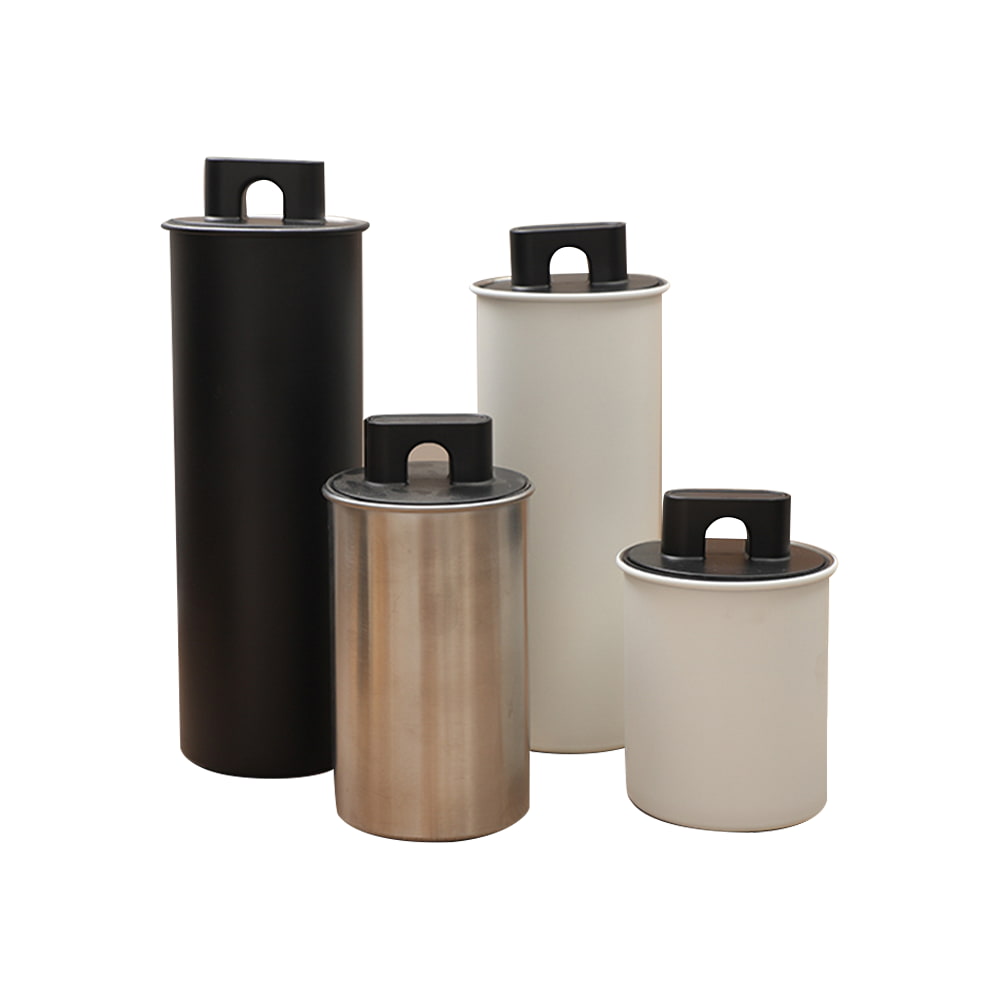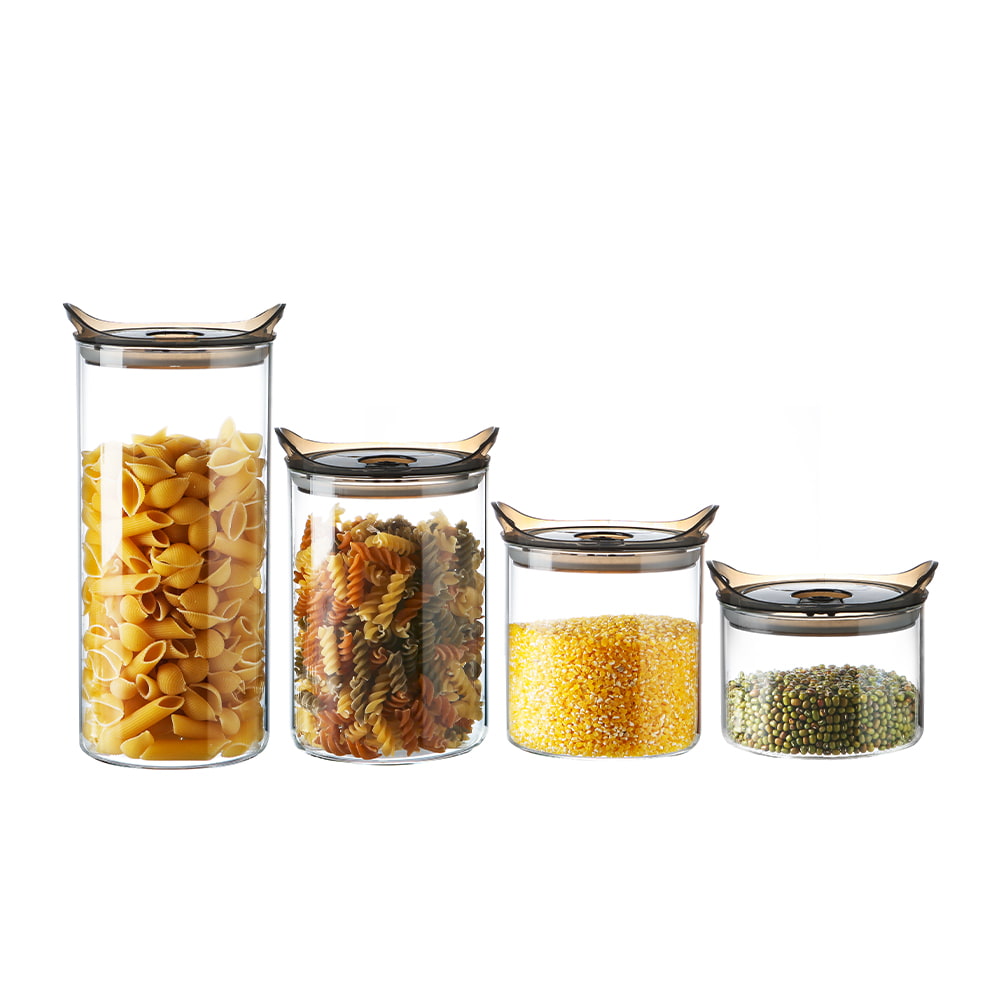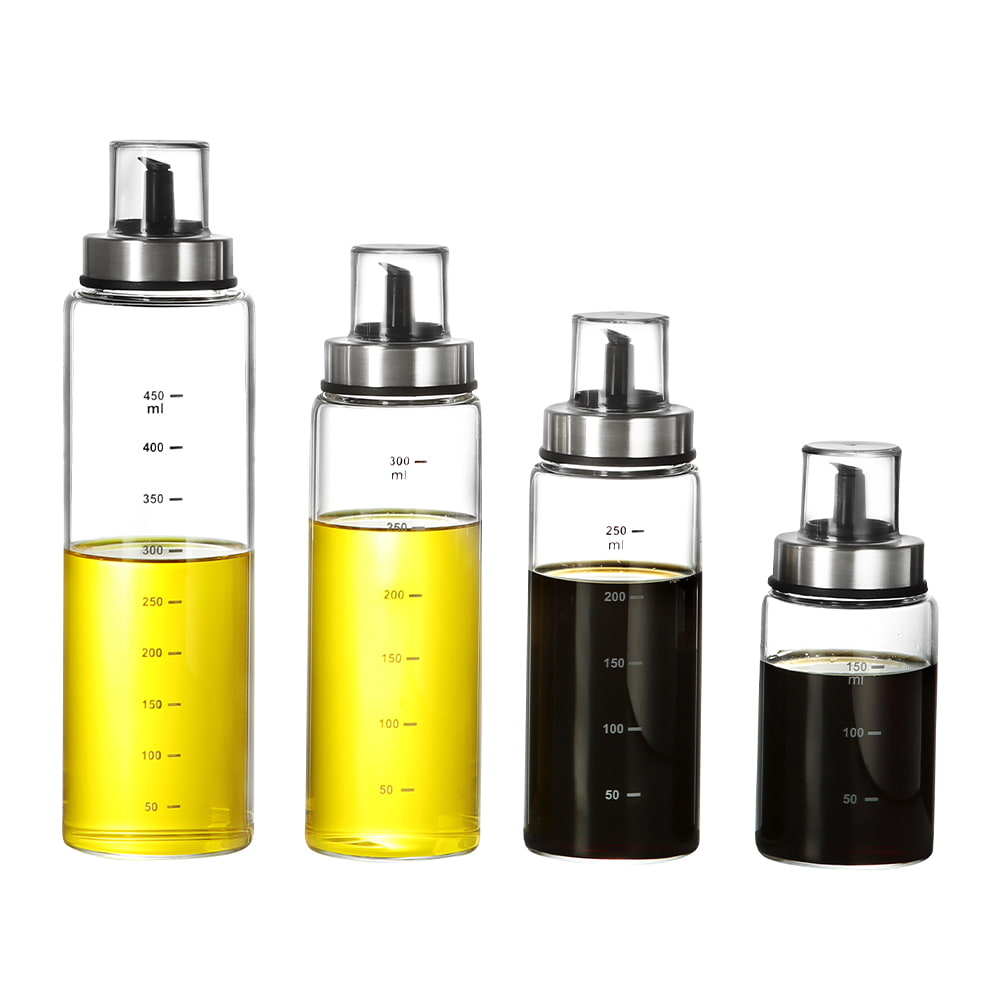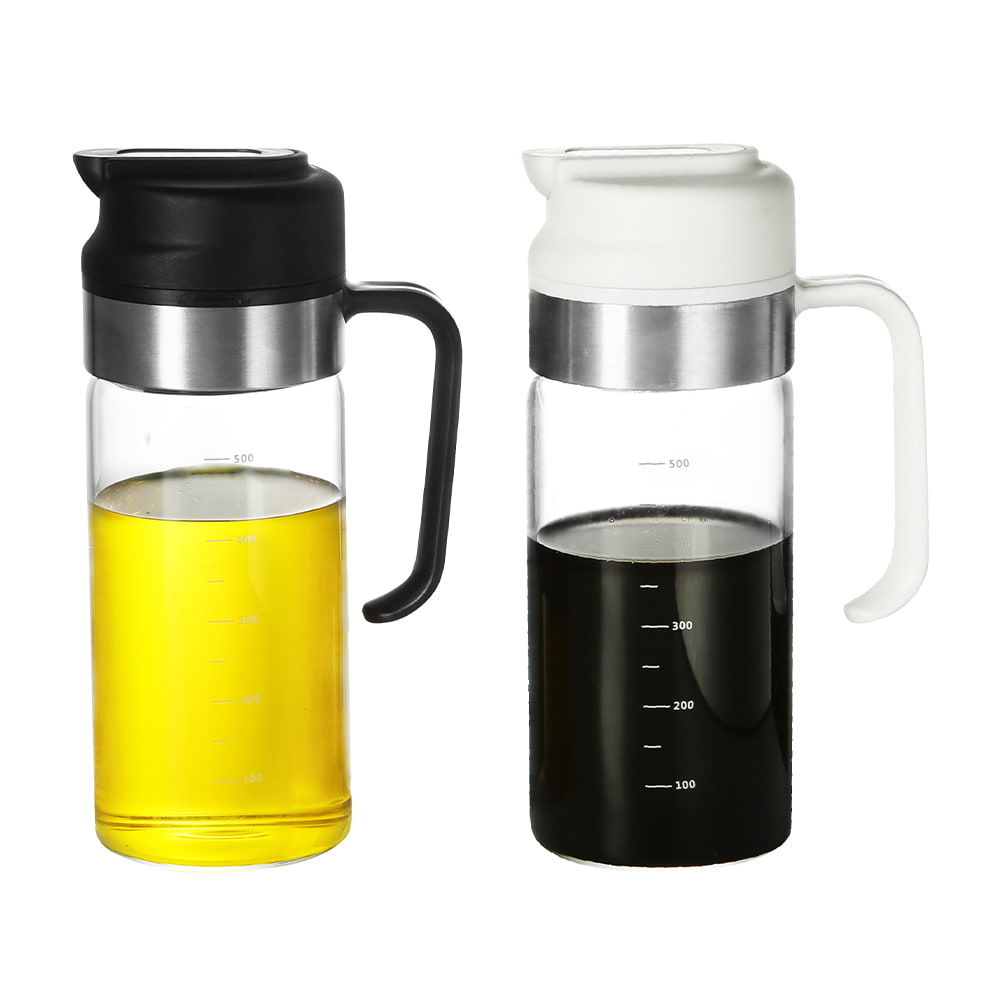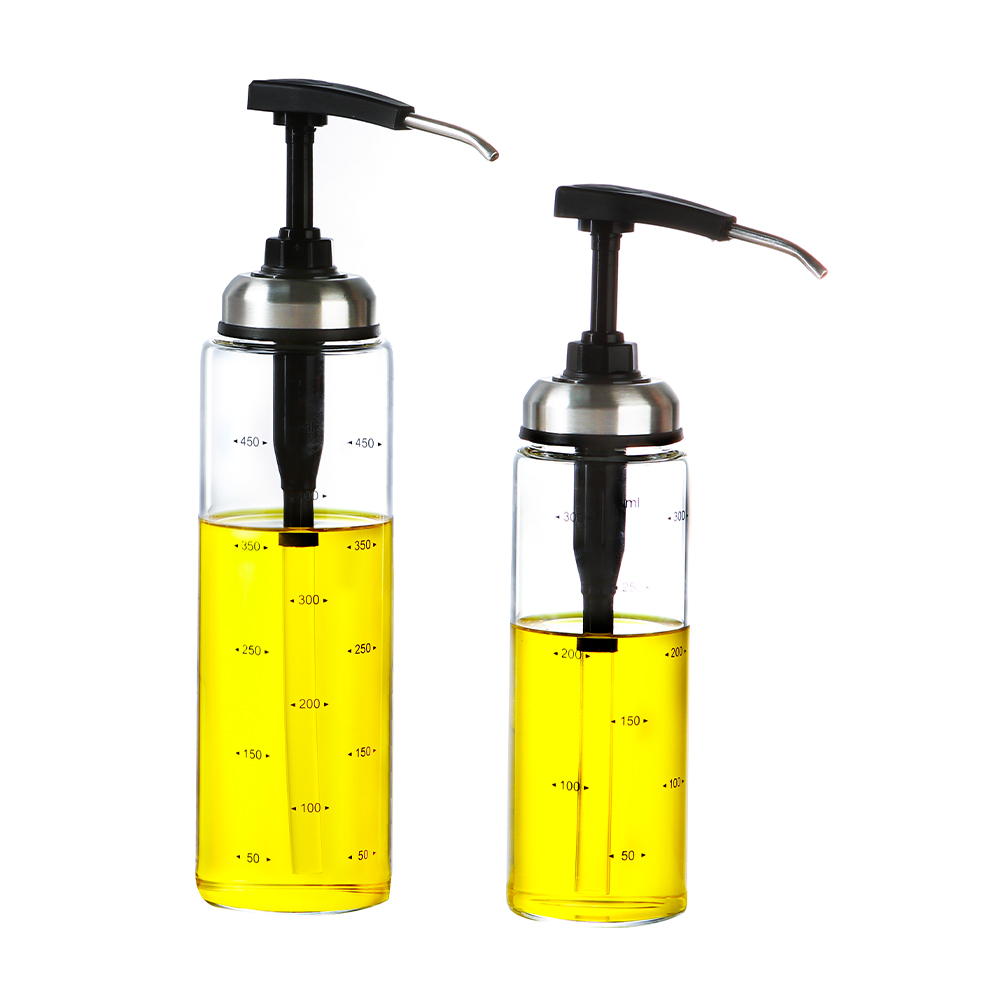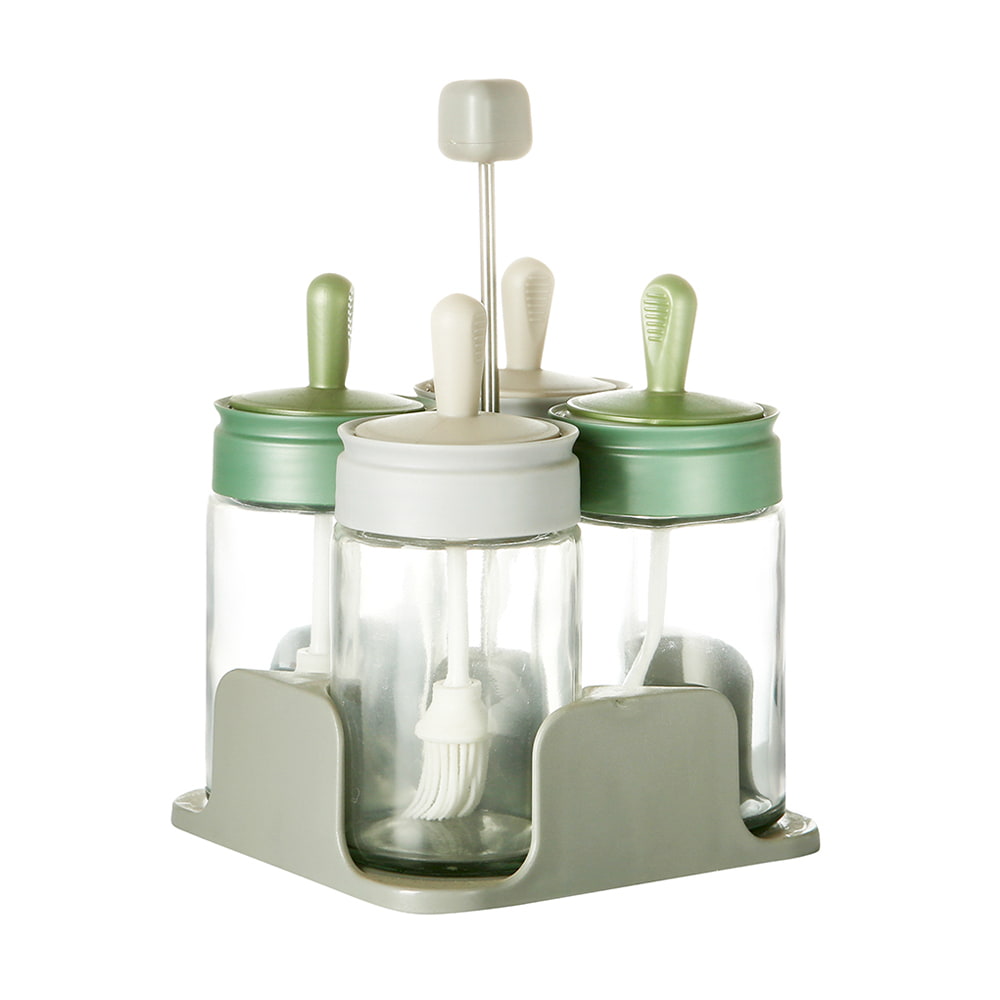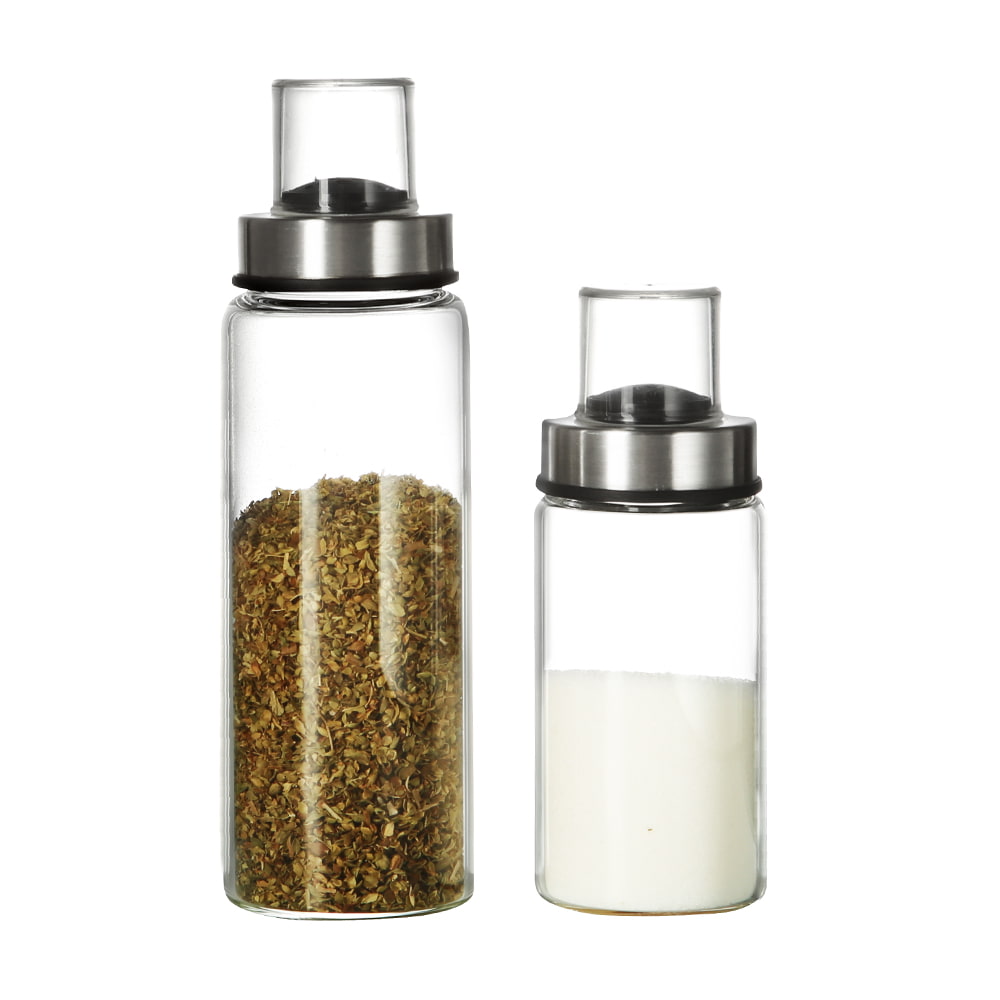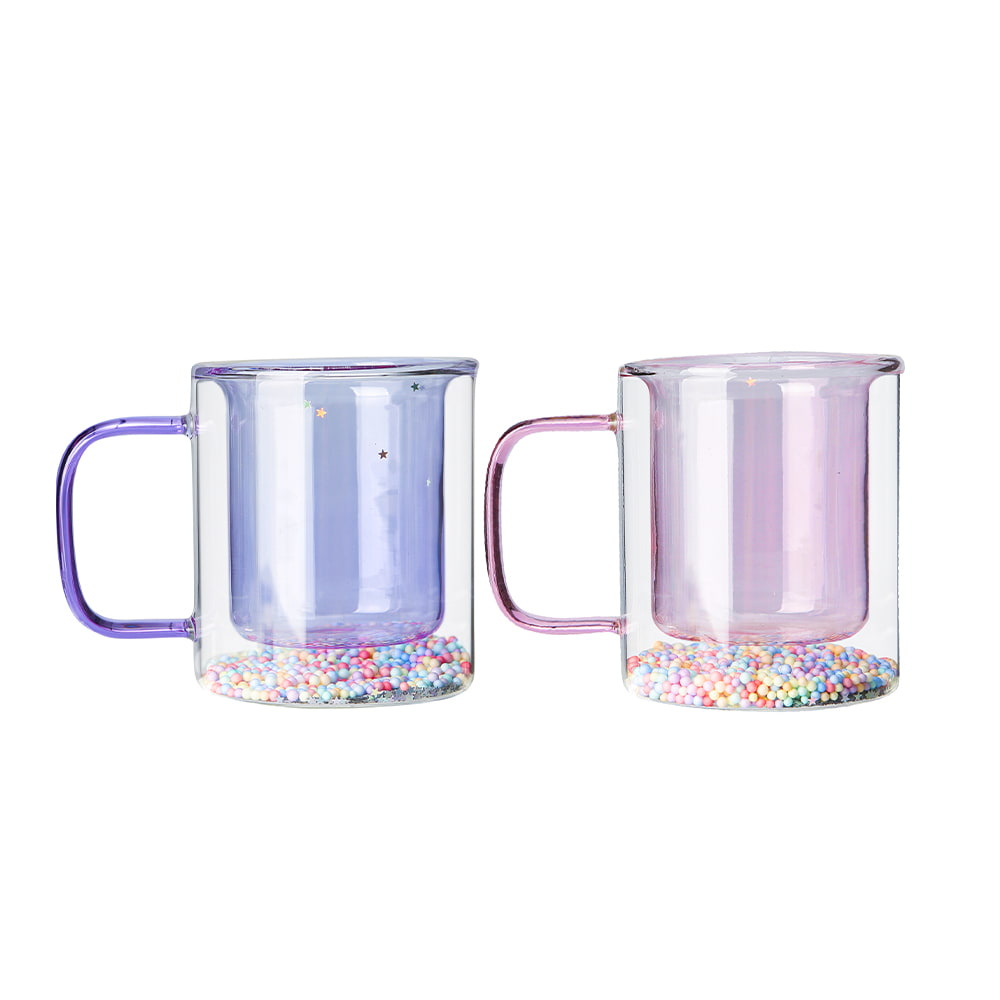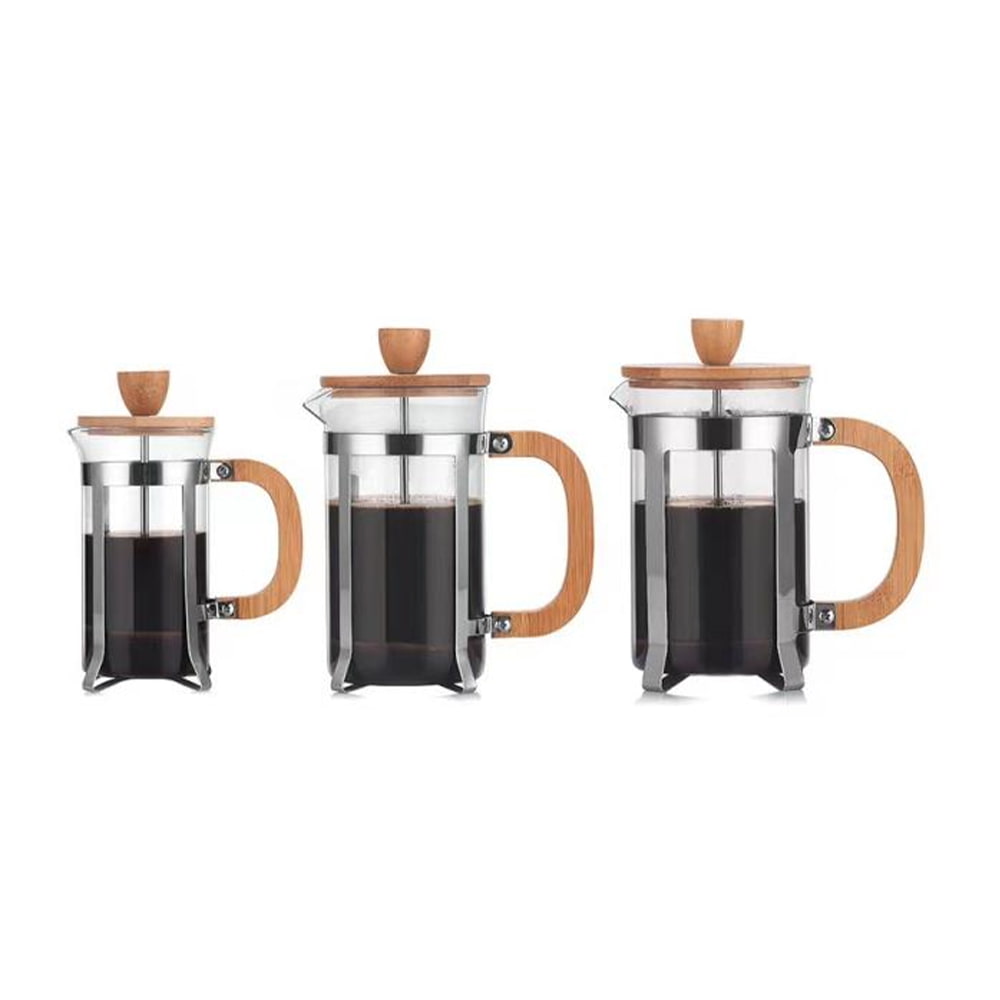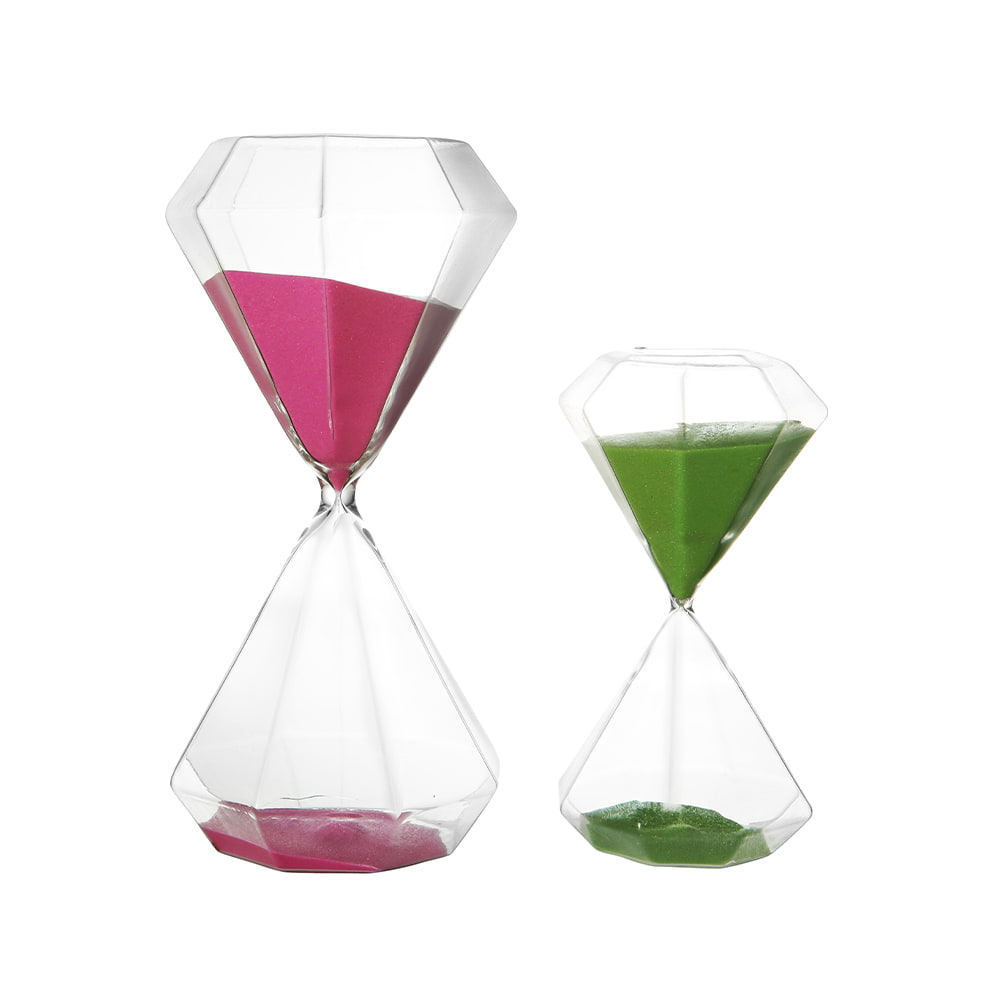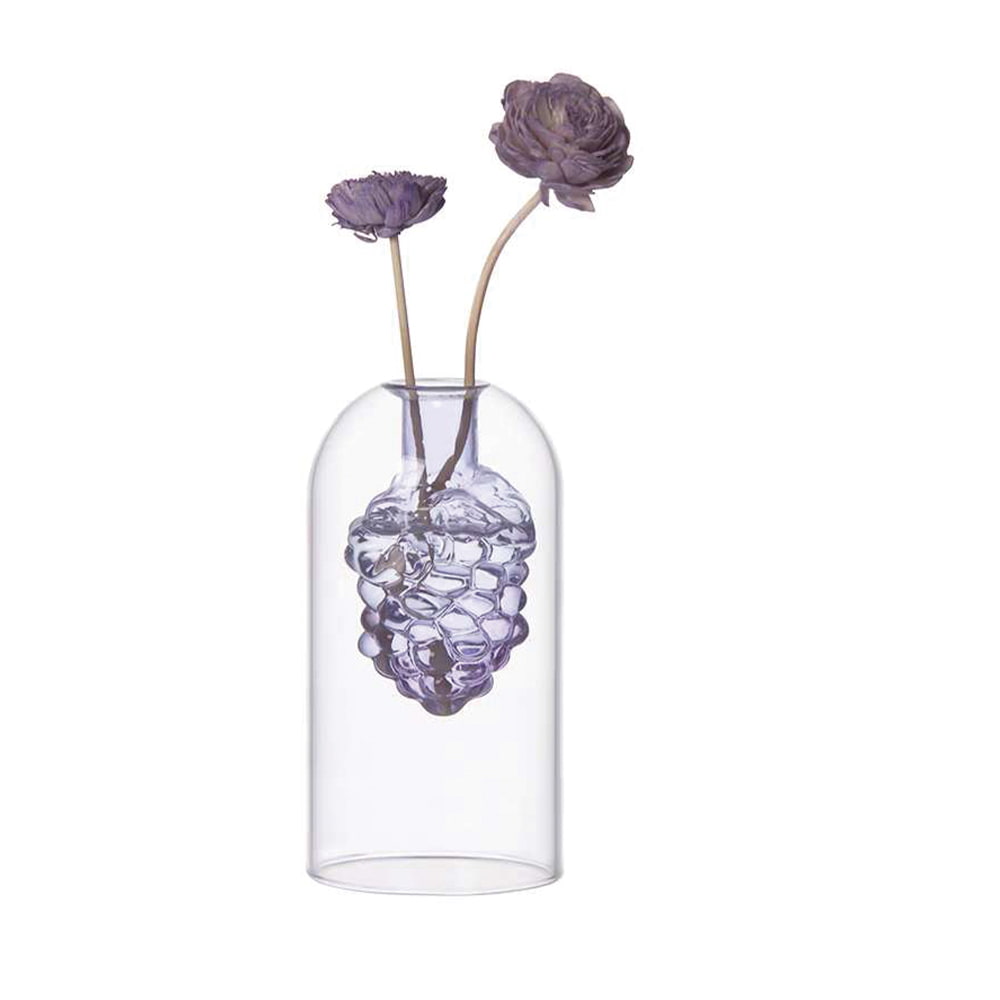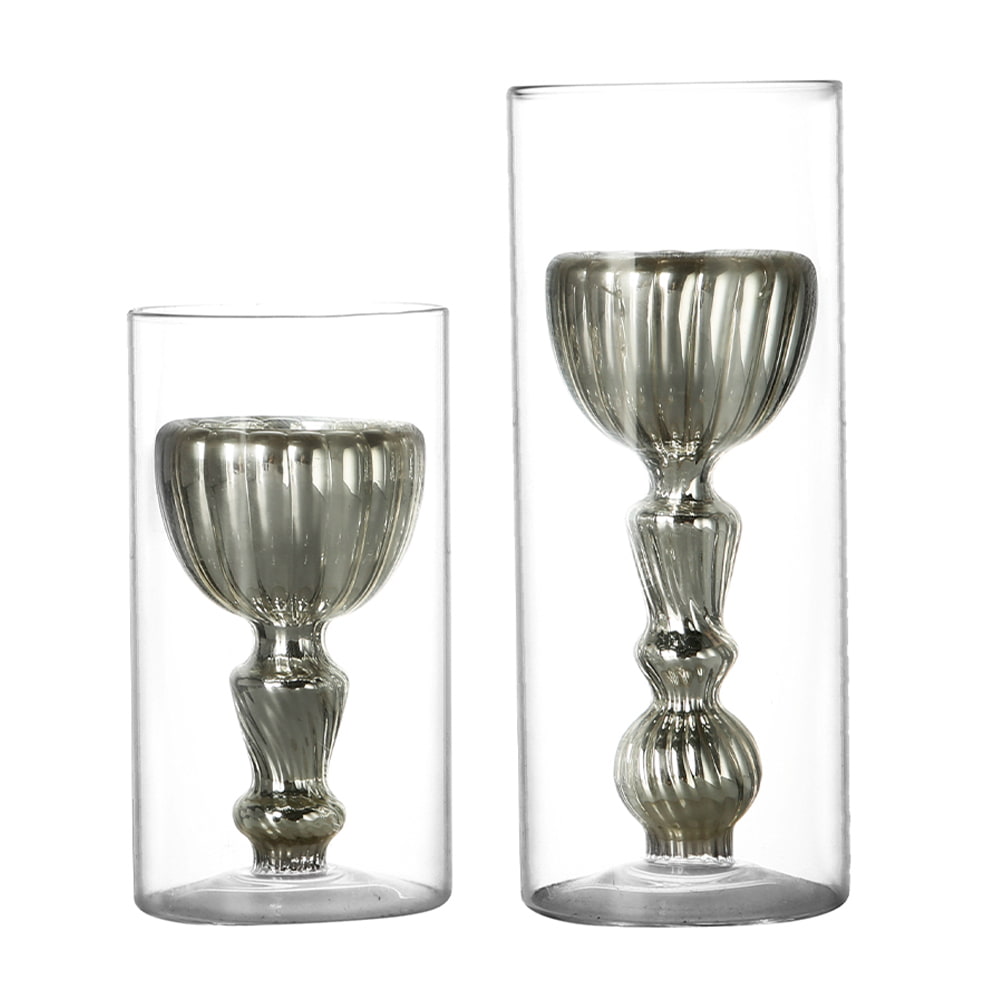 Language
Language



+86-0514-8866-8898
+86-18083766162

julia@nchousewares.com
Jack@nchousewares.com
Glass Coffee Pot: All Buyer Need Knowledge Points
1. What is a Glass Coffee Pot?
A Glass Coffee Pot is a type of coffee brewing equipment that allows coffee to be brewed and served in a transparent glass container. It is often used in pour-over brewing methods, where hot water is poured over ground coffee to extract flavor and aroma. The glass material ensures that the coffee remains fresh and free from odors or chemical residues.
- Key Features:
- Transparency: Allows you to see the coffee as it brews.
- Heat Resistance: Made from borosilicate glass or heatproof glass, which can withstand high temperatures without cracking or breaking.
- Easy to Clean: Glass pots are typically dishwasher-safe and easy to maintain.
- Aesthetic Appeal: The clear glass design adds a modern and elegant look to any kitchen or café.
2. How Does a Glass Coffee Pot Work?
The brewing process in a Glass Coffee Pot is similar to that of a pour-over coffee maker. The coffee grounds are placed in a filter or directly in the pot, and hot water is poured over them slowly. The glass container allows for even extraction of flavors and aromas, resulting in a clean and flavorful cup of coffee.
- Brewing Methods:
- Pour-Over: Water is poured in a controlled manner over the coffee grounds.
- French Press: A variation of the glass pot, where the coffee is steeped and then pressed.
- Electric Models: Some glass coffee pots come with electric heating bases for convenience and speed.
3. Materials Used in Glass Coffee Pots
| Material Name | Properties | Uses | Source/Reference |
| Borosilicate Glass | Heat-resistant, chemically resistant, high transparency | Main body of coffee pots, glass cups, drip coffee makers | Commonly used in kitchenware |
| Acacia Wood | Natural wood, eco-friendly, durable | Handles, lids, decorative elements | Sustainable and natural material |
| Polypropylene (PP) | Heat-resistant, lightweight, easy to process | Lids, filter baskets, handles | Common in kitchen appliances |
| Silicone | Heat-resistant, flexible, good sealing | Drip valves, seals, lids | Widely used in food-grade products |
| Glassine Paper | Thin, transparent, high density | Packaging, decorative elements | Used in food packaging |
| Separate Glassine Paper | Silicone-treated, waterproof, oil-resistant | Packaging, decorative elements | Enhanced for food safety |
| Parchment Paper | Sulfurized, waterproof, oil-resistant | Packaging, decorative elements | Common in food packaging |
| Aluminum Foil | Moisture-proof, anti-oxidation | Packaging, decorative elements | Widely used in food storage |
| PET Film | Suitable for oven use | Packaging, decorative elements | Used in food packaging |
| OPP Film | Suitable for microwave use | Packaging, decorative elements | Used in food packaging |
| Ceramic | Heat-resistant, aesthetic, durable | Coffee pots, tea sets, decorative elements | Common in traditional and modern kitchenware |
| Engobe | Used for surface decoration on ceramics | Coffee pots, tea sets, decorative elements | Applied to ceramic surfaces |
| Olive Tree Branches | Natural, eco-friendly | Decorative design elements | Used in artisanal products |
| Olive Wood | Natural, eco-friendly, durable | Handles, lids, decorative elements | Sustainable and aesthetic material |
| Stainless Steel | Corrosion-resistant, durable, easy to clean | Exterior of coffee pots, heating elements | Used in modern kitchen appliances |
Notes:
- Borosilicate Glass is the most commonly used material for glass coffee pots due to its excellent heat resistance and transparency.
- Acacia Wood and Olive Wood are natural and eco-friendly materials often used for handles and lids, providing both sustainability and aesthetics.
- Polypropylene and Silicone are used for accessories like lids, filter baskets, and seals, offering good sealing and durability.
- Ceramic and Engobe are used for decorative and functional enhancements, providing both beauty and functionality.
- Stainless Steel is used for the exterior and heating components of coffee pots, offering durability and ease of cleaning.
4. Construction Of Glass Coffee Pots
| Component | Description | Function | Source/Reference |
| Body | Made of transparent glass, typically cylindrical or spherical with clear capacity markings | Used to hold brewed coffee, allowing observation of the coffee's flow and color changes | Common in kitchenware |
| Spout | Usually designed as conical or curved, convenient for pouring coffee | Controls the flow rate of the coffee, prevents dripping | Common in coffee pots |
| Handle | Typically made of wood or plastic, attached to the side of the pot | Provides ease of holding and pouring, increases convenience | Common in kitchenware |
| Lid | Transparent glass lid, some with small holes for ventilation or adding coffee grounds | Maintains coffee temperature, prevents overflow, some designs allow observation of the brewing process | Common in coffee pots |
| Filter Basket | Usually made of metal or glass, located at the bottom of the pot | Separates coffee grounds from the brewed coffee, ensuring flavor and cleanliness | Common in coffee pots |
| Metal Ring | Used to secure the filter basket and lid, ensuring airtightness | Prevents leakage during brewing, improves sealing | Common in coffee pots |
| Switch | Used to control the power or brewing function of the coffee machine | Allows user operation, enables automated control | Common in electric coffee machines |
| Lower Body | The larger part at the bottom of the pot, used to collect brewed coffee | Provides sufficient capacity for holding coffee | Common in coffee pots |
| Upper Body | Connected to the lower body, used to hold coffee grounds or brewed coffee | Convenient for adding coffee grounds or liquid, improves usability | Common in coffee pots |
| Drip Spout | Located on the lid or top of the pot, used to control the flow of coffee | Facilitates pouring, prevents dripping | Common in coffee pots |
Notes:
- The body is the core part of the glass coffee pot, usually made of transparent glass, allowing users to observe the brewing process.
- The spout design directly affects the pouring speed and aesthetics of the coffee; common designs include conical and curved shapes.
- The handle provides convenience for holding and pouring, typically made of wood or plastic.
- The lid not only seals the pot but also helps maintain coffee temperature, and some designs allow observation of the brewing process.
- The filter basket is a critical component for separating coffee grounds from the brewed coffee, ensuring flavor and cleanliness.
- The metal ring is used to secure the filter basket and lid, ensuring airtightness and preventing leakage.
- The switch is used to control the power or brewing function of the coffee machine, allowing user-friendly operation.
- The lower body and upper body are the two main parts of the pot, used for collecting coffee and adding coffee grounds or liquid.
- The drip spout is used to control the flow of coffee, making it easier to pour and preventing dripping.
4. Design and Aesthetic Features
| Feature | Description | Aesthetic Appeal | |
| Transparency | The glass material allows light to pass through, creating a sense of openness and elegance. | Enhances the visual appeal of the coffee pot, making it a focal point in the kitchen. | |
| Geometric Patterns | Intricate geometric designs, such as honeycomb or lattice-like structures, are often etched onto the surface of the glass. | Adds a sophisticated and artistic touch, making the coffee pot a piece of functional art. | |
| Floral and Ornamental Designs | Delicate floral patterns and filigree work are commonly used to adorn the surface of glass coffee pots. | Creates a soft, elegant, and timeless look, suitable for both modern and traditional settings. | |
| Material Combinations | Glass is often combined with other materials such as wood, metal, or ceramic to create a harmonious and balanced design. | Offers versatility in design, allowing for customization to fit various interior styles. | |
| Minimalist Design | Clean lines and a lack of unnecessary ornamentation define minimalist glass coffee pots. | Conveys a modern and contemporary aesthetic, ideal for small spaces or modern interiors. | |
| Elegant Metal or Wood Bases | The base of the coffee pot is often crafted from metal or wood, providing a contrasting yet complementary element. | Adds warmth and stability to the design, enhancing the overall elegance. | |
| Customization Options | Glass coffee pots can be customized in terms of color, shape, and design to suit individual preferences. | Allows for personalization, making each piece unique and tailored to the user's taste. | |
| Reflective Surface | The reflective nature of glass helps to brighten the room and create an illusion of space. | Makes the coffee pot a standout feature in any room, especially in smaller or dimly lit spaces. | |
| Artistic Inlays | Decorative inlays, such as rosewood or silver, are sometimes incorporated into the design to add a touch of luxury. | Adds a rich and luxurious feel, making the coffee pot a statement piece. | |
| Functional Elegance | The design of the coffee pot not only serves a functional purpose but also enhances the aesthetic of the space. | Combines practicality with beauty, making it a versatile and desirable addition to any home. |
Notes:
- Transparency is a key feature of glass coffee pots, allowing light to pass through and creating a sense of openness and elegance.
- Geometric Patterns and Floral Designs add a sophisticated and artistic touch, making the coffee pot a piece of functional art.
- Material Combinations offer versatility in design, allowing for customization to fit various interior styles.
- Minimalist Design conveys a modern and contemporary aesthetic, ideal for small spaces or modern interiors.
- Elegant Metal or Wood Bases add warmth and stability to the design, enhancing the overall elegance.
- Customization Options allow for personalization, making each piece unique and tailored to the user's taste.
- Reflective Surface helps to brighten the room and create an illusion of space, making the coffee pot a standout feature.
- Artistic Inlays add a rich and luxurious feel, making the coffee pot a statement piece.
- Functional Elegance combines practicality with beauty, making it a versatile and desirable addition to any home.
5. Capacity and Size Options
| Capacity (ml) | Common Uses | Dimensions (H x W x D) |
| 85 | Espresso, small coffee | 7cm x 13cm x 7cm |
| 120 | Cappuccino, espresso | 12cm x 12cm x 12cm |
| 180 | Latte, cappuccino | 12cm x 12cm x 12cm |
| 250 | Tea, small coffee | 11.1cm x 10.1cm x 11.1cm |
| 300 | Small coffee, tea | 12cm x 12cm x 12cm |
| 340 | Coffee, tea | 11.5cm x 11.9cm x 11.5cm |
| 360 | Latte, cappuccino | 12.5cm x 12.5cm x 12.5cm |
| 400 | Coffee, tea | 12cm x 12cm x 12cm |
| 500 | Large coffee, tea | 19cm x 7cm x 7cm |
| 600 | Large coffee, tea | 25cm x 16cm x 25cm |
| 800 | Large coffee, tea | 25cm x 16cm x 25cm |
| 1000 | Large coffee, tea | 25cm x 16cm x 25cm |
| 1200 | Large coffee, tea | 25cm x 16cm x 25cm |
| 1300 | Large coffee, tea | 25cm x 16cm x 25cm |
Notes:
- Capacity is a key factor in choosing a glass coffee pot, as it determines the amount of coffee that can be brewed or stored.
- Common Uses vary depending on the capacity of the pot. For example, a 120ml pot is suitable for espresso and cappuccino, while a 500ml pot is ideal for larger servings.
- Dimensions are important for both functionality and aesthetics. A taller and narrower pot may be more suitable for certain types of coffee or for fitting into specific spaces.
6. Functionality and Usage
Functionality
- Temperature Maintenance: Glass coffee pots are designed to keep coffee warm for extended periods. This is particularly useful when serving coffee to multiple people or when the coffee needs to be kept at an optimal temperature for a longer time .
- Ease of Cleaning: The smooth surface of glass makes these pots easy to clean, ensuring that the coffee remains free from any residues that could affect its taste .
- Measurement Accuracy: Many glass coffee pots come with clear markings on their sides, which allow users to measure the exact amount of coffee needed. This helps in maintaining consistency in the coffee's strength and flavor .
- Aesthetic Appeal: The transparency of glass allows users to see the coffee's color and clarity, adding to the aesthetic appeal of the pot. This feature is especially appreciated in modern kitchens where presentation is as important as functionality .
- Versatility: Beyond coffee, glass coffee pots can also be used for other beverages such as tea, and even for creative purposes like flower arrangements or as part of DIY projects .
Usage
- Home Use: In a home setting, glass coffee pots are ideal for families who enjoy a shared cup of coffee. The large capacity and easy-to-clean design make them perfect for daily use .
- Office Use: In office environments, these pots are favored for their ability to keep coffee hot and ready for the team. Their sleek design also makes them suitable for office decor .
- Outdoor Use: The durability and heat resistance of glass coffee pots make them suitable for outdoor activities. They can be used to heat water for tea or coffee while camping or picnicking .
- Special Occasions: Glass coffee pots can also be used in special occasions, such as weddings or parties, where they can serve as elegant drinkware or even as part of decorative arrangements .
Additional Features
- Flapping Lid and Dedicated Spout: Some models come with a flapping lid and a dedicated spout, which facilitate easy pouring and reduce the risk of spills .
- Dishwasher Safe: Many glass coffee pots are designed to be dishwasher safe, making them convenient for busy individuals or households .
- Recyclability: Glass is a recyclable material, and many manufacturers highlight this eco-friendly aspect in their product descriptions .
7. Safety and Convenience Features
| Feature | Description | Safety and Convenience |
| Auto Shut-Off | Automatically turns off when the water reaches boiling point or if there is no water in the kettle | Prevents overheating and potential damage, ensuring safe operation |
| Boil-Dry Protection | Detects when the kettle is empty and automatically shuts off | Prevents dry heating and potential damage to the kettle |
| Heat-Resistant Handle | Designed to provide a secure and comfortable grip | Reduces the risk of burns and ensures safe handling |
| Drip-Free Spout | Ensures smooth pouring without spills | Enhances convenience and reduces mess |
| Dishwasher Safe | Can be washed in a dishwasher | Saves time and effort in cleaning |
| Recyclable Material | Made from glass, which is recyclable | Environmentally friendly and sustainable |
| Transparent Design | Allows visibility of the coffee or tea during brewing | Enables monitoring of the brewing process and ensures quality |
| Leak-Proof Seal | Ensures no leaks during use | Maintains the integrity of the contents and prevents spills |
| Shatterproof Glass | Made from borosilicate glass, which is resistant to thermal shock | Provides durability and safety, especially during sudden temperature changes |
| Ergonomic Design | Comfortable to hold and use | Enhances user experience and reduces strain during use |
| Multi-Use Functionality | Can be used for coffee, tea, and other beverages | Offers versatility and convenience for various needs |
| Easy to Clean | Smooth surface and dishwasher-safe design | Ensures hygiene and saves time on cleaning |
| Temperature Control | Some models include temperature control systems | Allows for precise brewing at desired temperatures, enhancing flavor |
| Cordless Design | Swivel base allows for easy pouring from any angle | Increases flexibility and convenience during use |
Notes:
- Auto Shut-Off and Boil-Dry Protection are essential safety features that prevent accidents and damage.
- Heat-Resistant Handle and Drip-Free Spout enhance both safety and convenience during use.
- Transparent Design allows for monitoring the brewing process, ensuring the quality of the final product.
- Recyclable Material and Shatterproof Glass contribute to the environmental friendliness and durability of the product.
- Ergonomic Design and Multi-Use Functionality make the glass coffee pot a versatile and user-friendly choice.
8. Common Uses and Applications
| Use/Application | Description |
| Home Brewing | A glass coffee pot is ideal for home brewing, especially for those who prefer traditional methods like pour-over or French press. The glass allows you to observe the brewing process and helps retain the aroma and flavor of the coffee. |
| Office Use | Glass coffee pots are commonly used in office settings due to their aesthetic appeal and ease of cleaning. Some models also have insulation features to keep coffee warm for longer periods. |
| Café/Restaurant Use | In cafés and restaurants, glass coffee pots are often used to showcase the brewing process, especially for methods like V60 or Chemex. This enhances the visual appeal and customer experience. |
| Educational and Demonstrative Use | The transparency of glass makes it ideal for educational purposes, such as teaching or demonstrating coffee brewing techniques in a classroom or workshop. |
| Special Brewing Methods | Glass coffee pots are essential for certain brewing methods such as siphon (vacuum pot), cold brew, or even traditional Turkish coffee. These methods require glass to maintain temperature and allow for visual monitoring. |
| Decorative Use | Some glass coffee pots are designed with aesthetics in mind and can serve as decorative items in kitchens or living spaces. For example, the TRENDGLAS JENA glass coffee pot is both functional and stylish. |
| Agricultural and Industrial Use | While not directly related to the glass pot itself, coffee cherry (the outer layer of the coffee bean) has agricultural and industrial applications, such as being used as organic fertilizer or soil conditioner. This shows the broader context of coffee-related products. |
Additional Notes:
- Material: Typically made from heat-resistant glass, some models come with a silicone base for better heat resistance and stability.
- Usage Tips: Avoid placing glass coffee pots in the microwave, especially if they have metal components.
- Cleaning and Maintenance: After use, thoroughly clean and dry the pot to prevent residue buildup and ensure longevity.
9. Safety Tips
| Safety Tips | Description |
| Do not place hot glass pot on cold or wet surfaces | Placing a hot glass pot on a cold or wet surface can cause thermal shock, leading to cracks or breakage. |
| Avoid using cracked or damaged glass pots | A cracked or damaged glass pot can be dangerous and should not be used. |
| Do not use the glass pot for other than intended use | The glass pot is designed for specific use and should not be used in other ways, such as in a microwave or oven. |
| Keep the glass pot away from high-heat sources | The glass pot should be kept away from stoves, ovens, or other high-heat sources to prevent damage. |
| Do not use abrasive cleaners or steel wool | Using abrasive materials like steel wool or hard scrubbers can scratch the glass and reduce its lifespan. |
| Keep the glass pot out of reach of children | Children should not be allowed to use or handle the glass pot to avoid burns or injuries. |
| Do not use the glass pot with wet or greasy hands | Using the glass pot with wet or greasy hands can cause slipping and potential injury. |
| Avoid touching the hot parts of the glass pot | The glass pot can become very hot during use, so avoid touching the hot parts to prevent burns. |
| Do not cover the glass pot while it is in use | Covering the glass pot while it is in use can trap steam and increase the risk of burns. |
| Store the glass pot with the lid off | Storing the glass pot with the lid off allows for proper ventilation and prevents mold or mildew growth. |
10. Maintenance Tips
| Maintenance Tips | Description |
| Clean Regularly | Clean your glass coffee pot immediately after each use to prevent coffee stains and odors from setting in. Use warm water and mild dish soap for regular cleaning . |
| Avoid Abrasive Cleaners | Never use abrasive cleaners or steel wool, as they can scratch the glass surface. Stick to mild dish soap, white vinegar, and baking soda for safe and effective cleaning . |
| Use White Vinegar for Deep Cleaning | For stubborn stains or mineral buildup, use a solution of equal parts white vinegar and water. Soak the carafe in this mixture, then scrub with a soft brush before rinsing thoroughly . |
| Rinse Promptly After Use | Rinse the carafe with water right after use to prevent coffee oils and stains from settling. This simple habit helps maintain the cleanliness of your carafe . |
| Check for Leaks or Damage | Before using the glass coffee pot, check for any leaks or damage to ensure it is safe to use. A damaged carafe can be dangerous and should not be used . |
| Store with Lid Off | Store the glass coffee pot with the lid off to allow proper ventilation and prevent the growth of mold or mildew. Keeping the lid off also helps the carafe dry faster . |
| Use a Bottle Brush for Hard-to-Reach Areas | If your carafe has a narrow neck, use a bottle brush to reach and clean those hard-to-access areas. The long, flexible bristles of a bottle brush can ensure a thorough cleaning . |
| Avoid Sudden Temperature Changes | Glass is sensitive to temperature changes, so avoid placing a hot carafe on a cold or wet surface. This can cause thermal shock, leading to cracks or breakage . |
| Handle with Care | Glass coffee pots are not designed for rough handling. Handle them gently to avoid accidental drops or impacts that could cause damage . |
| Descale Regularly | If your water source has a high mineral content, consider descaling your carafe every few weeks using a commercial descaling solution or a vinegar solution. This helps prevent mineral buildup that can affect the taste of your coffee . |
| Keep the Exterior Clean | Clean the exterior of the glass coffee pot regularly with a damp cloth and mild dish soap. Coffee spills and stains on the outside can affect the overall cleanliness and appearance of your equipment . |
| Inspect Seals and Joints | Periodically check the seals and joints of your coffee maker, especially if your carafe is designed to fit snugly into the machine. Ensure there is no buildup of coffee residues in these areas . |
| Use Distilled Water | Using distilled water for brewing can help minimize mineral deposits on your glass coffee carafe. This is especially useful if your tap water has a high mineral content . |
| Dry Completely | After cleaning, use a microfiber cloth or a soft, lint-free towel to dry the glass coffee carafe completely. Ensure that no moisture is left behind, as this can contribute to the growth of mold or mildew over time . |
11. Cleaning Tips
| Cleaning Tips | Description |
| Rinse Immediately After Use | After using your glass coffee pot, rinse it thoroughly with warm water as soon as possible. This helps prevent any leftover residue from drying and becoming harder to remove later . |
| Use Mild Dish Soap | For regular cleaning, use a mild dish soap that is effective in cutting through grease and coffee residue without leaving a strong scent or taste behind. Use a soft brush or sponge to scrub gently . |
| White Vinegar Solution | For stubborn stains or mineral deposits, mix equal parts of white vinegar and water. Let the solution sit for at least 15-20 minutes to break down the stains. Then scrub with a soft brush and rinse thoroughly with cold water . |
| Baking Soda Paste | For a more intensive cleaning session, especially when dealing with coffee oils and lingering odors, create a baking soda paste by mixing baking soda with a small amount of water. Apply the paste to the interior surfaces of the carafe, using a soft brush to scrub away stains and odors. Rinse thoroughly with cold water . |
| Coffee Grounds for Odors | If your glass coffee carafe has developed unpleasant odors, sprinkle a few tablespoons of fresh coffee grounds into the carafe, add a small amount of water, and give it a good swirl. Let the coffee grounds sit for a few minutes to absorb odors. Rinse thoroughly with warm water . |
| Rice or Crushed Ice for Hard-to-Reach Areas | For the narrow neck and spout areas that are challenging to clean with a brush or sponge, consider using rice or crushed ice. Fill the carafe with a small amount of rice or crushed ice, along with a bit of water. Swirl the mixture around, allowing the rice or ice to reach and scrub those hard-to-reach places. Rinse thoroughly to remove any remaining rice or ice particles . |
| Use a Bottle Brush | If your glass coffee carafe has a narrow neck, a bottle brush can be a useful tool for reaching and cleaning those hard-to-access areas. The long, flexible bristles of a bottle brush can ensure a thorough cleaning . |
| Avoid Abrasive Cleaners | Steer clear of abrasive cleaners or scouring pads that can scratch the glass surface. Stick to mild dish soap, white vinegar, and baking soda for safe and effective cleaning . |
| Prevent Stains | Rinse the carafe promptly after each use to prevent coffee oils and stains from settling. This simple habit can go a long way in maintaining the cleanliness of your carafe . |
| Store with Lid Off | When not in use, store the glass coffee carafe with the lid off to allow proper ventilation and prevent the growth of mold or mildew . |
| Dry Completely | After cleaning, use a microfiber cloth or a soft, lint-free towel to dry the glass coffee carafe completely. Ensure that no moisture is left behind, as this can contribute to the growth of mold or mildew over time . |
| Use Distilled Water | If your water source has a high mineral content, consider using distilled water for brewing to help minimize mineral deposits on your glass coffee carafe . |
| Deep Clean Regularly | For a more thorough cleaning, especially if your carafe is used for wine or other beverages that may leave subtle flavors, consider periodically soaking it in a solution of water and white vinegar. Fill the carafe with equal parts water and vinegar, let it sit for a few hours or overnight, and then scrub and rinse as usual . |
12. Buying Tips
| Buying Tips | Description |
| Material Quality | Choose a glass coffee pot made from high-quality glass, such as borosilicate glass, which is more durable and resistant to thermal shock . |
| Capacity | Select a capacity that suits your needs. Common capacities range from 2-6 cups. If you often entertain guests, opt for a larger capacity . |
| Design and Aesthetics | Consider the design and aesthetics of the coffee pot. Glass coffee pots are often chosen for their transparency and visual appeal. Some models come with ergonomic handles and spill-proof lids . |
| Durability | Ensure the glass coffee pot is durable and can withstand regular use. Look for sturdy construction and reinforced glass to prevent breakage . |
| Ease of Cleaning | Choose a glass coffee pot that is easy to clean. Avoid models with narrow necks or hard-to-reach areas, as these can be difficult to clean . |
| Insulation Features | If you want to keep your coffee warm for longer, look for glass coffee pots with insulation features. These can help maintain the temperature of your coffee . |
| Brand and Price | Consider the brand and price of the coffee pot. Reputable brands often offer better quality and customer support. Prices can vary widely depending on the brand and features . |
| Filter Compatibility | If you plan to use a filter, ensure the glass coffee pot is compatible with your preferred filter type. Some models are designed to work with specific filters . |
| Portability | If you need a portable coffee pot, consider the weight and design of the glass pot. While glass is generally lightweight, it may not be as portable as other materials . |
| Display Functionality | Glass coffee pots are ideal for those who want to see the coffee as it brews. This can be a great feature for those who enjoy the visual aspect of the brewing process . |
| Safety Features | Look for safety features such as a secure lid and a non-slip base to prevent spills and ensure safe use . |
| Environmental Impact | Glass is an environmentally friendly material that is recyclable. Consider the environmental impact of your choice when selecting a glass coffee pot . |
12. Common Mistakes to Avoid When Using a Glass Coffee Pot
Even with the best equipment, mistakes can affect the quality of your coffee. Here are some common mistakes to avoid:
- Using the Wrong Water Temperature: Too hot or too cold water can affect the flavor and extraction of the coffee.
- Using the Wrong Grind Size: A coarse grind can lead to under-extraction, while a fine grind can cause over-extraction.
- Not Cleaning the Pot Properly: Residue can build up over time and affect the taste and hygiene of your coffee.
- Using a Damaged Pot: Cracks or chips can affect the heat distribution and safety of the pot.
13. Customization and Personalization
Many manufacturers offer customization options for glass coffee pots, including:
- Logo Printing: Add your brand or logo to the pot for promotional purposes.
- Color Options: Choose from a range of colors to match your brand or preferences.
- Engraving: Add personalized engravings or messages.
- Special Designs: Work with manufacturers to create unique designs for events or gifts.
14. Shipping and Packaging
When purchasing a glass coffee pot, consider the shipping and packaging options:
- Packaging: Most pots are shipped in brown boxes, gift boxes, or foam boxes.
- Shipping Methods: International shipping is available through DHL, FedEx, UPS, and other express services.
- Custom Orders: For large quantities, manufacturers like HEMERA and BCE offer bulk shipping and custom packaging.
15. Customer Reviews and Feedback
Customer reviews are an important factor when choosing a glass coffee pot. Look for feedback on:
- Durability: How well the pot holds up over time.
- Ease of Use: How easy it is to clean and operate.
- Brewing Quality: How well the pot extracts flavor and aroma.
- Value for Money: Whether the price is reasonable for the quality and features.
16. Comparison with Other Coffee Brewing Equipment
Glass coffee pots are often compared to other brewing methods, such as:
- French Press: Offers a rich and bold coffee but can be messy.
- Drip Coffee Makers: Convenient but less customizable.
- Pour-Over Drippers: Similar to glass pots but often used with paper filters.
- Espresso Machines: More complex and expensive, but offer a different brewing experience.
17. Common Faults And Solutions
| Common Faults | Description | Solutions |
| Compressor Overheating | The compressor overheats when the winding temperature is too high. The resistance value of the thermistor inside the motor winding increases rapidly. When it exceeds 141k Ω, the thermal protection module SSM will cut off the operation of the unit and display the overheating fault on the control panel . | Check the compressor's cooling system and ensure proper ventilation. Replace the thermistor or compressor if necessary. |
| Low Pressure Fault | Low suction pressure indicates that the amount of return air is small, and the refrigeration capacity is insufficient. This can cause poor heat dissipation of the compressor motor, leading to motor damage . | Clean the air filter and ensure the refrigerant is at the correct level. Check for leaks in the refrigeration system. |
| Coffee Too Dilute | The coffee is too dilute, which may be due to incorrect coffee-to-water ratio or using a filter that is not properly seated. | Use the correct amount of coffee grounds and water. Ensure the filter is properly placed and not damaged or folded. |
| Coffee Not Hot Enough | The coffee is not hot enough, which may be due to the coffee pot being placed on the heating plate for too long or the heating plate not being at the right temperature. | Place the coffee pot on the heating plate for a shorter time. Ensure the heating plate is functioning correctly. |
| Coffee is Less Than Expected | The amount of coffee in the pot is less than expected, which may be due to the filter not being properly saturated or the coffee grounds not being evenly distributed. | Ensure the filter is fully saturated with water before adding coffee grounds. Distribute the coffee grounds evenly in the filter. |
| Cracks in the Glass Pot | Cracks in the glass pot may be caused by thermal shock, especially when the pot is placed on a cold or wet surface. | Avoid placing the hot glass pot on cold or wet surfaces. Handle the pot gently to avoid accidental drops or impacts. |
| Difficulty in Cleaning | The glass pot may be difficult to clean due to coffee stains or mineral buildup. | Use a mild dish soap, white vinegar, or baking soda for cleaning. For stubborn stains, use a bottle brush to reach hard-to-access areas. |
| Mold or Mildew Growth | Mold or mildew may grow in the glass pot if it is not stored properly. | Store the glass pot with the lid off to allow proper ventilation. Dry the pot completely after cleaning. |
| Filter Not Compatible | The filter may not be compatible with the glass coffee pot, leading to poor brewing results. | Ensure the filter is compatible with the glass coffee pot. Use the correct size and type of filter. |
| Leakage | The glass pot may leak if the lid is damaged or not properly sealed. | Check the lid for damage. Ensure the lid is properly sealed before use. |
18. Glass Coffee Pot in the Context of Specialty Coffee
In the specialty coffee industry, the glass coffee pot is often used to highlight the quality and craftsmanship of the coffee. It is a key tool for baristas and coffee enthusiasts who want to control the brewing process and enhance the flavor profile of the coffee.
- Transparency: The glass material allows baristas to monitor the brewing process and adjust the water flow as needed.
- Flavor Enhancement: The clean and neutral nature of glass ensures that the coffee’s natural flavors are not altered by the container.
- Aesthetic Appeal: The modern and minimalist design of glass coffee pots is often preferred in specialty coffee shops and cafe settings.
19. Glass Coffee Pot in the Context of Home Brewing
For home brewers, the glass coffee pot is a versatile and user-friendly tool that can enhance the coffee experience. It is especially popular among those who want to experiment with different brewing methods and improve their coffee-making skills.
- Ease of Use: The transparent design makes it easy to see the coffee as it brews, allowing for adjustments in the process.
- Portability: Many glass coffee pots are lightweight and portable, making them ideal for home use or travel.
- Customization: Home brewers often customize their glass coffee pots with logos, colors, or engravings to reflect their personal style.
20. Glass Coffee Pot in the Context of Commercial Use
In commercial settings, such as cafés, restaurants, and hotels, the glass coffee pot is a reliable and professional-grade tool for brewing coffee for large numbers of customers.
- Durability: Commercial-grade glass coffee pots are built to last, with stronger glass and more robust construction.
- Consistency: The uniform heat distribution of glass ensures consistent brewing results across multiple uses.
- Aesthetics: The clean and modern look of glass coffee pots is often preferred in high-end commercial environments.
21. Glass Coffee Pot in the Context of Travel and Camping
For travelers and campers, the glass coffee pot is a compact and convenient tool for brewing coffee on the go.
- Portability: Many glass coffee pots are designed to be lightweight and easy to carry, making them ideal for travel and camping.
- Heat Resistance: The heat-resistant glass ensures that the coffee stays hot for longer, even in changing environments.
- Ease of Cleaning: The smooth surface of the glass makes it easy to clean, even after long trips.
22. Glass Coffee Pot in the Context of Gifting and Promotional Use
The glass coffee pot is a popular gift item and a promotional tool for businesses and events.
- Gift Potential: The aesthetic and functional design of glass coffee pots makes them a great gift for coffee lovers.
- Promotional Use: Businesses can personalize glass coffee pots with logos, messages, or brand colors to promote their brand.
- Event Use: Glass coffee pots are often used in weddings, parties, and corporate events to enhance the coffee experience.
23. Glass Coffee Pot in the Context of Art and Craftsmanship
For artisans and craftsmen, the glass coffee pot is a canvas for creativity and expression.
- Artistic Design: Many glass coffee pots are handcrafted with intricate designs, colors, and patterns.
- Craftsmanship: The precision and care that goes into making a glass coffee pot reflects the artistry and skill of the maker.
- Collectibility: Handcrafted glass coffee pots are often collectible and valuable, especially among coffee enthusiasts and art lovers.
24. Glass Coffee Pot in the Context of Sustainability and Eco-Friendly Living
In the context of sustainability and eco-friendly living, the glass coffee pot is a responsible and environmentally friendly choice.
- Durability: Glass is a long-lasting material, which means less waste and fewer replacements.
- Recyclability: Glass is 100% recyclable, making it a sustainable choice for eco-conscious consumers.
- Energy Efficiency: Many glass coffee pots are energy-efficient, especially when used with electric heating bases.
25. Glass Coffee Pot in the Context of Social Media and Content Creation
In the digital age, the glass coffee pot has become a popular subject for social media and content creation.
- Visual Appeal: The transparency and elegance of the glass coffee pot makes it a great subject for photography and videography.
- Content Creation: Many coffee influencers and bloggers use glass coffee pots in their content to showcase their brewing skills and coffee culture.
- Brand Promotion: The aesthetic and functional design of the glass coffee pot is often used in brand promotions and marketing campaigns.
26. Glass Coffee Pot in the Context of Education and Learning
In the context of education and learning, the glass coffee pot is a tool for teaching and learning about coffee culture and brewing techniques.
- Educational Use: The transparency and simplicity of the glass coffee pot make it an ideal tool for teaching about coffee brewing methods.
- Learning Resource: Many coffee schools and workshops use glass coffee pots to demonstrate the brewing process and explain the science behind coffee.
- Student Projects: The versatility and accessibility of the glass coffee pot make it a popular choice for student projects and experiments.
27. Glass Coffee Pot in the Context of Innovation and Technology
In the context of innovation and technology, the glass coffee pot is being evolved and enhanced with new technologies and materials.
- Smart Features: Some glass coffee pots now come with smart features, such as temperature control, automatic brewing, and app integration.
- Material Innovation: New heat-resistant and durable glass materials are being developed to enhance the performance and longevity of the glass coffee pot.
- Design Innovation: The design of the glass coffee pot is being reimagined with new shapes, colors, and functionalities to meet the evolving needs of consumers.
28. Glass Coffee Pot in the Context of Globalization and Cultural Exchange
In the context of globalization and cultural exchange, the glass coffee pot is a bridge between different cultures and traditions.
- Global Popularity: The glass coffee pot has become a global phenomenon, with different cultures adapting and reinterpreting its use. For example, in Asia, the glass coffee pot is often used in tea ceremonies, while in Europe, it is a staple in cafe culture.
- Cultural Fusion: The glass coffee pot has been blended with local traditions in many countries, creating unique and hybrid brewing methods. For example, in India, the glass coffee pot is sometimes used to brew chai, combining traditional glassware with local flavors.
- International Trade: The global trade of glass coffee pots has led to the spread of craftsmanship and design across continents. Artisanal glass coffee pots from Italy, Japan, and Scandinavia are now available in markets around the world.
29. Glass Coffee Pot in the Context of Modern Living and Minimalism
In the era of modern living and minimalism, the glass coffee pot has become a symbol of simplicity and elegance.
- Minimalist Design: The clean lines and transparent design of the glass coffee pot align with the aesthetic of modern interiors.
- Space Efficiency: The compact size of many glass coffee pots makes them ideal for small kitchens and urban living spaces.
- Lifestyle Integration: The glass coffee pot is often used in home barista setups, where coffee brewing is part of a broader lifestyle that includes cooking, baking, and home decor.
30. Glass Coffee Pot in the Context of Health and Wellness
In the context of health and wellness, the glass coffee pot is seen as a healthy and natural choice for coffee lovers.
- Natural Material: The glass material is non-toxic and free from BPA, making it a safe choice for those who are health-conscious.
- No Residue Buildup: Unlike metal or plastic pots, glass does not retain odors or residues, ensuring that each cup of coffee is fresh and clean.
- Mindful Brewing: The transparency and simplicity of the glass coffee pot encourage mindful and intentional brewing, which is a core principle of the health and wellness movement.
31. Glass Coffee Pot in the Context of Art and Design
The glass coffee pot is not only a functional tool but also a piece of art and design.
- Artistic Expression: Many glass coffee pots are handcrafted with intricate designs, colors, and patterns, making them collectible and decorative items.
- Design Awards: Some glass coffee pots have won design awards and recognitions, highlighting their aesthetic and functional excellence.
- Interior Design: The elegant and modern look of the glass coffee pot makes it a popular choice for interior designers and home decorators.
32. Glass Coffee Pot in the Context of Business and Marketing
For businesses and marketers, the glass coffee pot is a powerful branding and marketing tool.
- Brand Identity: The glass coffee pot can be customized with logos, colors, and messages, making it a unique and memorable brand ambassador.
- Corporate Gifting: The elegant and functional design of the glass coffee pot makes it a popular choice for corporate gifting and employee appreciation programs.
- Event Marketing: The glass coffee pot is often used in events and promotions to enhance the brand image and customer experience.
32. Future Development Trends for Glass Coffee Pots
| Future Development Trends | Description |
| High-End and Personalized Design | The glass coffee pot industry will move towards high-end and personalized design. Consumers are increasingly seeking high-quality, unique glass coffee pots that reflect their personal style. High-end products will continue to capture a larger market share. |
| Intelligent and Smart Features | Smart glass coffee pots with features such as temperature display, voice control, and automatic brewing will become more popular. These features enhance the user experience and align with the trend of smart home integration. |
| Green and Sustainable Materials | Environmental awareness is driving the use of eco-friendly materials and sustainable production processes. Glass coffee pots made from recycled glass or biodegradable materials will become mainstream, reducing environmental impact. |
| Functional and Multi-Purpose Design | Glass coffee pots will incorporate more functional features, such as insulation, filtration, and portability. These designs will meet the dual needs of aesthetics and practicality. |
| Cross-Border Collaboration and Artist-Inspired Designs | Collaboration between brands and artists will lead to limited-edition glass coffee pots with unique designs. This trend will attract consumers who value creativity and exclusivity. |
| Health and Safety Focus | The use of safe and non-toxic materials, such as stainless steel, glass, and natural clay, will become more common. This shift responds to consumer demand for healthier and more environmentally friendly products. |
| Smart Home Integration | Glass coffee pots will be integrated into smart home systems, allowing users to control brewing processes remotely via mobile apps or voice assistants. This enhances convenience and user experience. |
| Eco-Friendly and Reusable Solutions | With the push for sustainability, reusable glass coffee pots will gain popularity. These products will be designed to be easily recyclable or biodegradable, reducing waste and environmental impact. |
| Customization and Personalization | Consumers will have more opportunities to customize their glass coffee pots, including color, material, and design. Digital tools will enable personalized production, meeting the growing demand for unique products. |
| Government and Industry Policy Support | Governments and industry organizations will promote stricter environmental policies, encouraging the development of green and sustainable glass coffee pot products. This will drive innovation and market growth. |
| Technological Innovation | Advances in technology will lead to the development of glass coffee pots with advanced features, such as temperature control, smart water level indicators, and even Bluetooth connectivity. These innovations will enhance the overall user experience. |
| Cultural and Lifestyle Integration | Glass coffee pots will be designed to integrate with tea and coffee culture, offering products that reflect global trends and cultural diversity. This will appeal to consumers who seek a more immersive and cultural experience. |
Recommended Products
 English
English  日本語
日本語  Deutsch
Deutsch  Español
Español 

